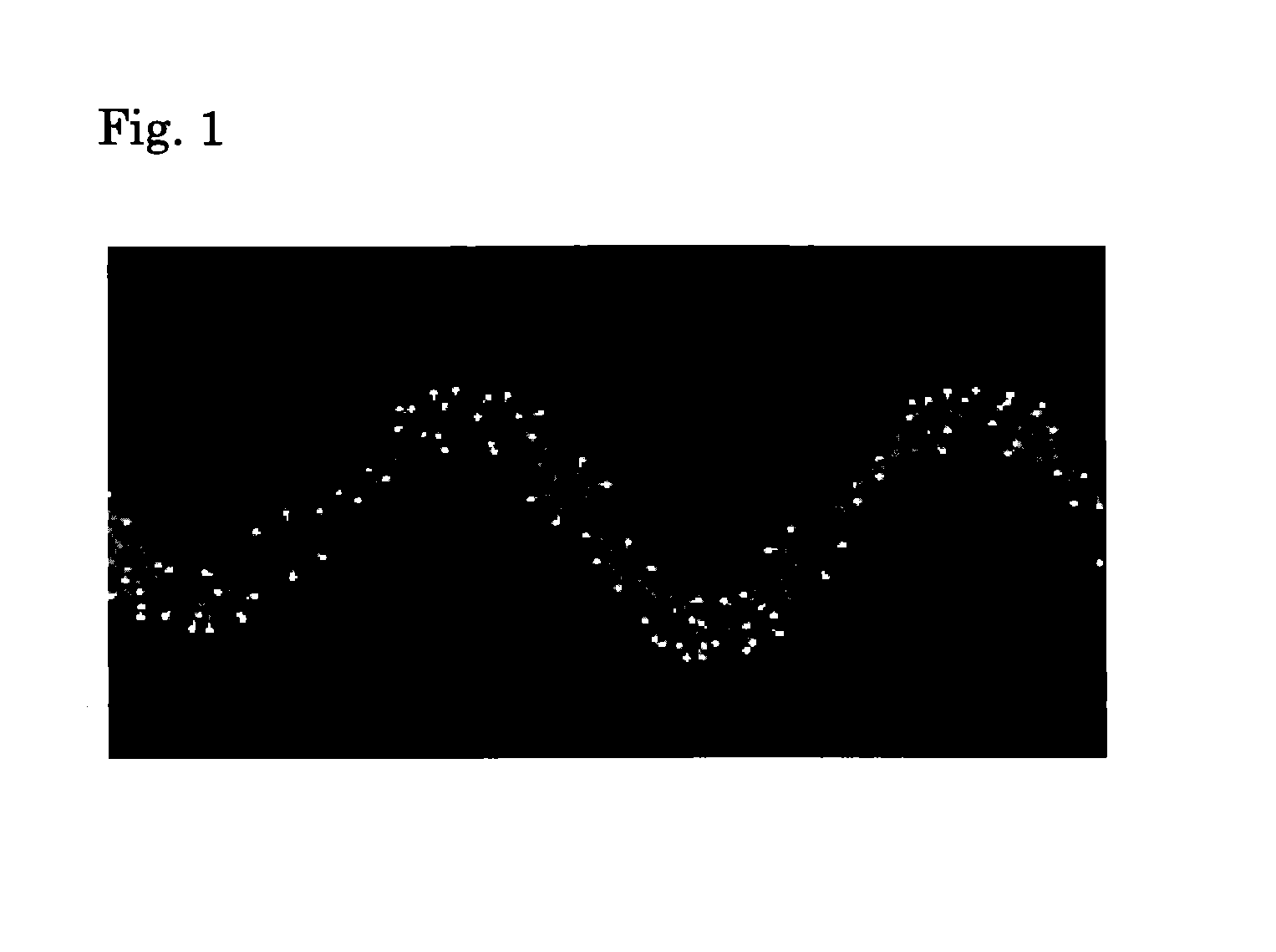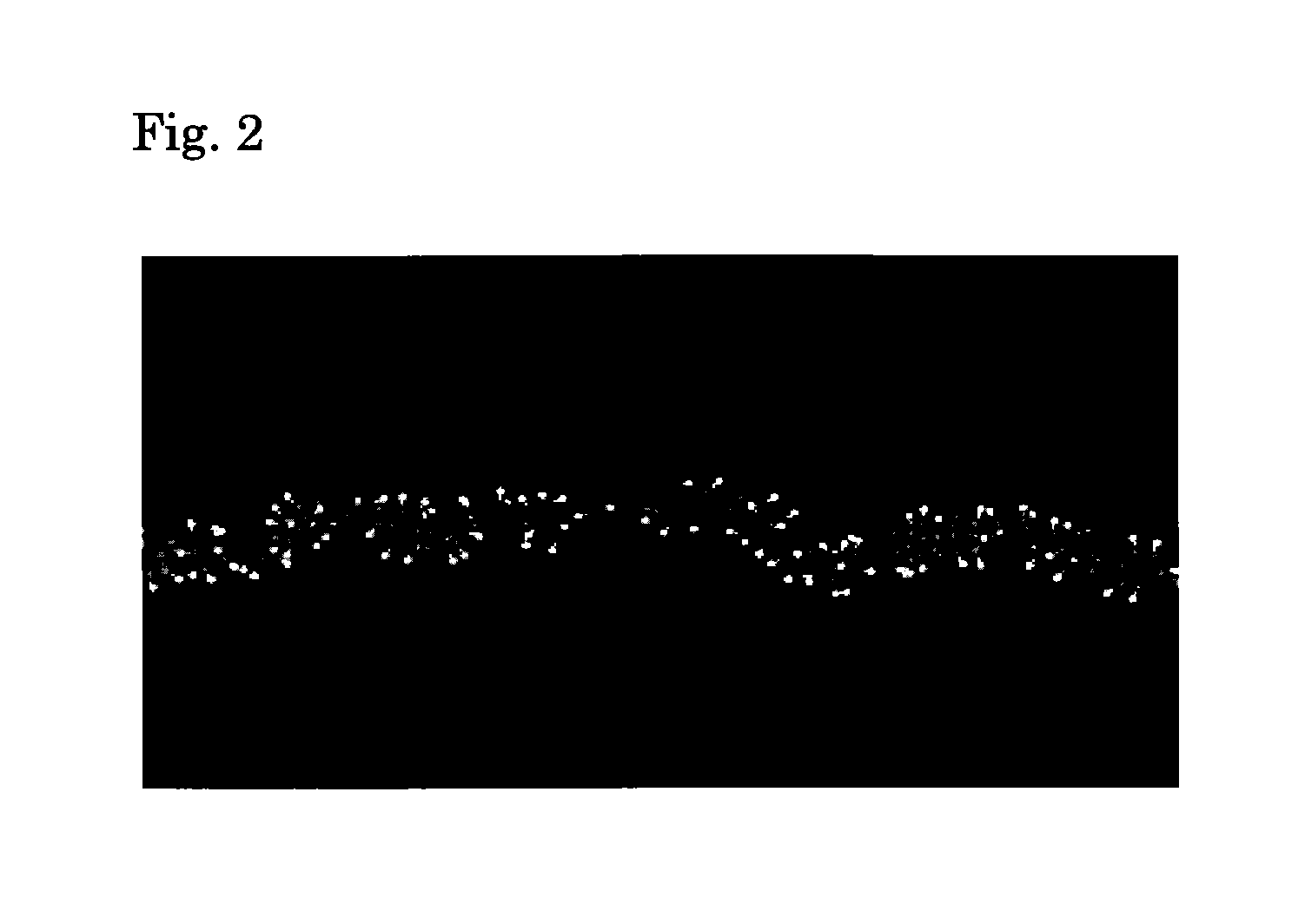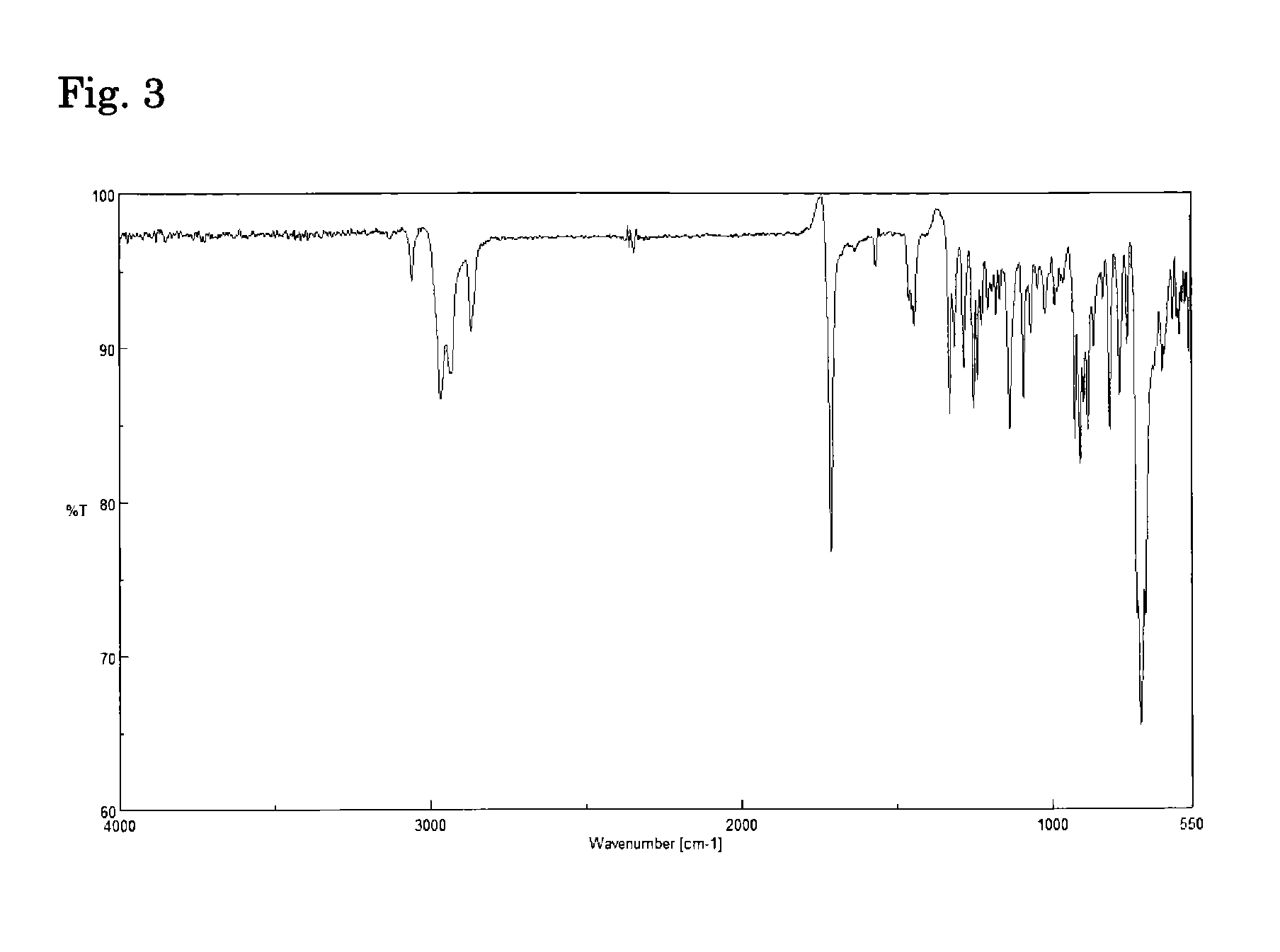Polyimide and alicyclic tetracarboxylic dianhydride used for producing the same
a technology of tetracarboxylic dianhydride and polyimide, which is applied in the field of polyimide and alicyclic tetracarboxylic dianhydride used for producing the same, can solve the problems of insufficient polymerizability of polyimide, inability to use whole aromatic polyimide in applications where transparency is not possible, and difficult to polymerize in a usual manner. , to achieve the effect of low linear expansion coefficient, excellent light transmi
- Summary
- Abstract
- Description
- Claims
- Application Information
AI Technical Summary
Benefits of technology
Problems solved by technology
Method used
Image
Examples
synthesis example 1
Preparation of 5-Norbornene-2-spiro-α-cyclopentanone-α′-spiro-2″-5″-norbornene
[0239]First, to a 2-L three-necked flask, 61.7 g (0.757 mol) of dimethylamine hydrochloride, 182 g (2.46 mol) of 1,3-dioxolane, 25.9 g (0.308 mol) of cyclopentanone, and 4.0 g (38 mmol) of 35% hydrochloric acid were added. Subsequently, a bulb condenser was set to the three-necked flask, and then the atmospheric gas inside the three-necked flask was replaced with nitrogen. After that, the three-necked flask was immersed in an oil bath of 90° C., and heated for 5 hours with stirring. Thus, a reaction liquid was obtained which contained a Mannich base (a compound represented by the general formula (I-2) shown in the above-described reaction formula (1) [a compound of general formula (I-2), where n was 2, R2 and R3 were each a hydrogen atom, Rs was each a methyl group, and X− was a chlorine ion]). Note that the thus obtained reaction liquid was subjected to a gas chromatography analysis (GC analysis: a detect...
synthesis example 2
Preparation of Norbornane-2-spiro-α-cyclopentanone-α′-spiro-2″-norbornane-5,5″,6,6″-tetracarboxylic Acid Tetramethyl Ester
[0245]To a 1000 ml glass autoclave vessel (manufactured by Taiatsu Techno Corporation under the tradename of “Hyper Glasstor, model TEM-V”), methanol (600 ml), 61.1 g (454 mmol) of CuCl2(II), 26.0 g (108 mmol) of the 5-norbornene-2-spiro-α-cyclopentanone-α′-spiro-2″-5″-norbornene obtained in Synthesis Example 1, and 243 mg (1.08 mmol) of Pd(OAc)2 were added to obtain a mixture liquid. Then, the vessel was hermetically-sealed, and the atmospheric gas inside the vessel was replaced with nitrogen. Next, while carbon monoxide was being introduced into the vessel, the mixture liquid was stirred for 5 hours under conditions of 20° C. and 0.9 MPa to obtain a reaction liquid. Subsequently, carbon monoxide was removed from the inside of the vessel, and the reaction liquid was concentrated using an evaporator to remove methanol from the reaction liquid. Thus, a reaction pr...
synthesis example 3
Preparation of Norbornane-2-spiro-α-cyclopentanone-α′-spiro-2″-norbornane-5,5″,6,6″-tetracarboxylic Dianhydride
[0249]To a 200 ml three-necked flask equipped with a distillation apparatus, 17.8 g (37.4 mmol) of the norbornane-2-spiro-α-cyclopentanone-α′-spiro-2″-norbornane-5,5″,6,6′-tetracarboxylic acid tetramethyl ester obtained in Synthesis Example 2, 113 g (1.88 mol) of acetic acid, and 1.78 g (9.4 mmol) of p-toluenesulfonic acid monohydrate were added to obtain a mixture liquid. Next, the three-necked flask was immersed in an oil bath of 135° C., and the mixture liquid was heated under reflux under an inner temperature condition of 113 to 121° C. for 20 hours (reflux step). Note that, in the reflux step, the reflux was continued, while the produced methyl acetate and water were distilled off with acetic acid. In addition, in the reflux step, the reflux was conducted, while acetic acid was added, as needed, using a dropping funnel to keep the amount of acetic acid in the flask con...
PUM
| Property | Measurement | Unit |
|---|---|---|
| temperature | aaaaa | aaaaa |
| temperature | aaaaa | aaaaa |
| glass transition temperature | aaaaa | aaaaa |
Abstract
Description
Claims
Application Information
 Login to View More
Login to View More - R&D
- Intellectual Property
- Life Sciences
- Materials
- Tech Scout
- Unparalleled Data Quality
- Higher Quality Content
- 60% Fewer Hallucinations
Browse by: Latest US Patents, China's latest patents, Technical Efficacy Thesaurus, Application Domain, Technology Topic, Popular Technical Reports.
© 2025 PatSnap. All rights reserved.Legal|Privacy policy|Modern Slavery Act Transparency Statement|Sitemap|About US| Contact US: help@patsnap.com



